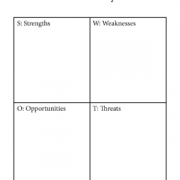Teaching Strategy: Peer Video Critique
“I wish students would give each other valuable feedback about what they are learning.”
If that sounds familiar, you might want to try this strategy.
The gap in reading skill levels is an issue nearly every CTE teacher faces. Walk into any given classroom, in any given program area, and it is likely you will find students whose ability levels vary between the seventh and 12th grade. CTE teachers must structure learning so that all students can learn equally, despite these differences. Fortunately, technical vocabulary presents a viable solution. When low-level readers and struggling learners focus on building expertise with technical vocabulary, they are able to close achievement gaps and pass certification exams.
The Catch
There’s a catch, and one in complete sync with the popular learning retention theory. Technical vocabulary terms are likely to be forgotten when the information is received via auditory and passive means (A. Raymond, personal communication, Oct. 4, 2012). In contrast, when students are actively saying the terms in context repeatedly, they are deepening the neural connections and vastly increasing the chances that the terms will be retained.
A solution: Leverage peer feedback & embrace technology.
The Peer Video Critique strategy is leveraged to foster peer feedback between students while embracing their love of technology. When students create short video segments and critique them with a “critical friend,” they learn the art of descriptive and directive feedback. In most learning situations, students are given evaluative and corrective feedback. Both methods are end result-oriented. In contrast, however, descriptive and directive feedback teach students to be actionable. They learn to ask questions and discover the worker’s thought process rather than focusing on the work produced (William, 2011).
The Strategy in Action
How long will it take?
20–40 minutes, depending on the number of students and how many practice video sessions students need before mastering.
When should I use the Peer Video Critique teaching strategy?
- During a unit of study, to reinforce technical vocabulary usage
- When you need students to demonstrate a deeper understanding of processes and how concepts relate to one another
As demonstrated in the video above, the Peer Video Critique strategy provides an excellent platform for students to think critically. Encourage them to use if-then statements as they describe a process.
What’s the gist?
It’s an active learning strategy that allows Gen Z students to collaborate via video on iPads and/or iPhones.
How It Works
- Partner students and provide a device for each group.
- Provide students with simple written directions.
- Allow teams space in the lab to practice the process and revisit their notes as needed until they feel comfortable to begin recording. Some students will go through several practice rounds, and that’s okay! This allows the teacher to pause and work directly with struggling students to clarify misunderstandings.
- With two videos created per team, one per person, encourage them to watch, compare against the directions and critique each other. As students finish at different times, you can have completed teams work to provide feedback to other teams. In some cases, students will want to view one another’s videos — which can be a great way to facilitate class discussions.
- Once students each have developed a strong critique, videos are submitted to the teacher via email or uploading to a private classroom YouTube channel.
Example: Peer — Video Observations
Task: You will be working with a partner to explain the four furnace operations that we have learned. Each person will create one BEST video explanation with performance. Here is your list of objectives:
- You need to sound like a professional plumber/HVAC installer — not a DIYer.
- Name the four key parts of the furnace as you run through the process.
- Explain how each of the parts operates.
- When you talk about the process, use at least two if-then statements.
- Discuss why the order of operations is important.
- Follow and discuss PPE and safety practices.
Choose who goes first. Practice, and then create your video. Watch the video together to check-off the six points above. Redo the video until it is perfect. Switch roles… Repeat.
Final Thoughts
A few days following the activity shown, students were assessed on the content with an exit slip. Raymond (2012) would not be surprised to find that students had retained the information quite well. All students scored above 75 percent on this particular assessment. By incorporating video and descriptive feedback, the teacher was able to create a sense of urgency often missing in the classroom. The teacher created a learning environment where students engaged in both active learning and metacognition. As they perfected their videos, they reflected on what they did and did not know. The power of this lesson lies in the reflective, focused and shared thinking.
Sandra Adams is a teacher and instructional coach with the Career Academy, Fort Wayne Community Schools. She co-wrote the ACTE-supported book But I’m NOT a Reading Teacher!: Literacy Strategies for Career and Technical Educators with Gwendolyn Leininger. Contact her to learn how you can implement the Peer Video Critique and other innovative teaching strategies in your CTE classroom.



